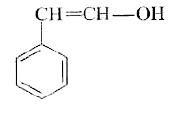Paramagnesim is not exhibited by:
CuSO4⋅5H2O
CuCl2⋅5H2O
CuI
NiSO4⋅4H2O
The correct Answer is:C
To determine which compound does not exhibit paramagnetism, we need to analyze the oxidation states and electronic configurations of the given compounds. Paramagnetism arises from the presence of unpaired electrons in the electronic configuration of an atom or ion.
1. Understanding Paramagnetism:
- Paramagnetism occurs due to the presence of unpaired electrons in an atom or ion. If all electrons are paired, the substance is diamagnetic and does not exhibit paramagnetism.
2. Analyzing Each Compound:
- We will analyze the given compounds one by one to determine their oxidation states and electronic configurations.
3. Option 1: CuSO4·5H2O:
- Oxidation State: Copper (Cu) has a +2 oxidation state because sulfate (SO4) has a -2 charge and water is neutral.
- Electronic Configuration: For Cu²⁺, the electronic configuration is Argon (Ar) 3d⁹.
- Unpaired Electrons: There is 1 unpaired electron in 3d⁹, so this compound is paramagnetic.
4. Option 2: CuCl2·5H2O:
- Oxidation State: Copper (Cu) also has a +2 oxidation state in this compound.
- Electronic Configuration: For Cu²⁺, it is again Argon (Ar) 3d⁹.
- Unpaired Electrons: There is 1 unpaired electron in 3d⁹, so this compound is paramagnetic.
5. Option 3: CuI:
- Oxidation State: In copper iodide, copper (Cu) has a +1 oxidation state.
- Electronic Configuration: For Cu⁺, the electronic configuration is Argon (Ar) 3d¹⁰.
- Unpaired Electrons: All electrons are paired in 3d¹⁰, so this compound is not paramagnetic (it is diamagnetic).
6. Option 4: NiSO4·4H2O:
- Oxidation State: Nickel (Ni) has a +2 oxidation state.
- Electronic Configuration: For Ni²⁺, the electronic configuration is Argon (Ar) 3d⁸.
- Unpaired Electrons: There are 2 unpaired electrons in 3d⁸, so this compound is paramagnetic.
Conclusion:
The compound that does not exhibit paramagnetism is CuI (Copper Iodide).
- Paramagnetism occurs due to the presence of unpaired electrons in an atom or ion. If all electrons are paired, the substance is diamagnetic and does not exhibit paramagnetism.
- We will analyze the given compounds one by one to determine their oxidation states and electronic configurations.
- Oxidation State: Copper (Cu) has a +2 oxidation state because sulfate (SO4) has a -2 charge and water is neutral.
- Electronic Configuration: For Cu²⁺, the electronic configuration is Argon (Ar) 3d⁹.
- Unpaired Electrons: There is 1 unpaired electron in 3d⁹, so this compound is paramagnetic.
- Oxidation State: Copper (Cu) also has a +2 oxidation state in this compound.
- Electronic Configuration: For Cu²⁺, it is again Argon (Ar) 3d⁹.
- Unpaired Electrons: There is 1 unpaired electron in 3d⁹, so this compound is paramagnetic.
- Oxidation State: In copper iodide, copper (Cu) has a +1 oxidation state.
- Electronic Configuration: For Cu⁺, the electronic configuration is Argon (Ar) 3d¹⁰.
- Unpaired Electrons: All electrons are paired in 3d¹⁰, so this compound is not paramagnetic (it is diamagnetic).
- Oxidation State: Nickel (Ni) has a +2 oxidation state.
- Electronic Configuration: For Ni²⁺, the electronic configuration is Argon (Ar) 3d⁸.
- Unpaired Electrons: There are 2 unpaired electrons in 3d⁸, so this compound is paramagnetic.
The compound that does not exhibit paramagnetism is CuI (Copper Iodide).
Topper's Solved these Questions
- d-BLOCK ELEMENTSBOOK - VK JAISWAL ENGLISHCHAPTER - d-BLOCK ELEMENTSEXERCISE - ASSERTION-REASON TYPE QUESTIONS
32 Videos
- d-BLOCK ELEMENTSBOOK - VK JAISWAL ENGLISHCHAPTER - d-BLOCK ELEMENTSEXERCISE - SUBJECTIVE PROBLEMS
6 Videos
- CO-ORDINATION COMPOUNDSBOOK - VK JAISWAL ENGLISHCHAPTER - CO-ORDINATION COMPOUNDSEXERCISE - LEVEL 2
144 Videos
- ENVIRONMENTAL CHEMISTRYBOOK - VK JAISWAL ENGLISHCHAPTER - ENVIRONMENTAL CHEMISTRYEXERCISE - ASSERTION-REASON TYPE QUESTIONS
14 Videos
Similar Questions
Knowledge Check
Tautomerism is exhibited by :
A B
B C
C D
D
Tautomerism is not exhibited by :
View SolutionTautomerism is exhibited by :
View SolutionDiapause is exhibited by
View SolutionHomology is exhibited by :
View SolutionTautomerism is exhibited by
View SolutionCis-trans isomerism is exhibited by:
View SolutionNuclear isomerism is exhibited by-
View Solution
